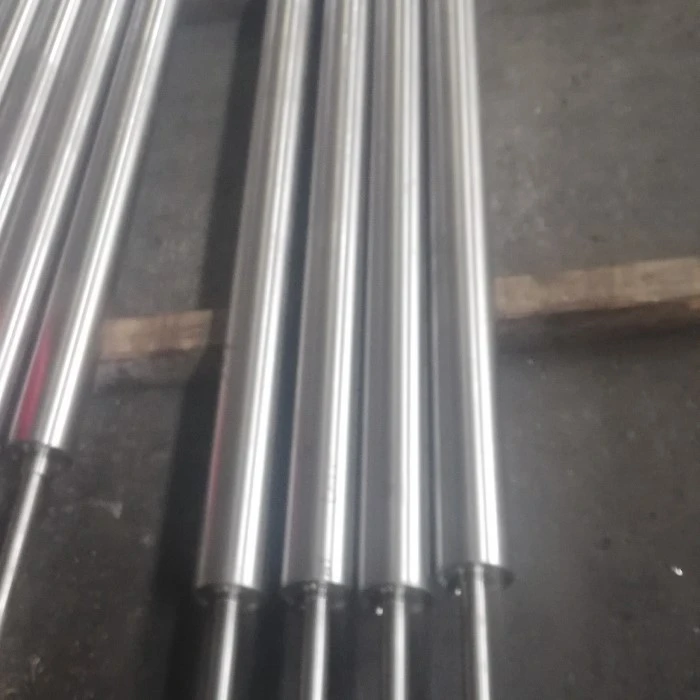All Furnace Rolls Are Created Equal
Material Composition Variations
One of the most pervasive myths about furnace rolls is that they are all made from the same materials. In reality, the composition of furnace rolls can vary significantly depending on their intended use. High-temperature applications may require rolls made from heat-resistant alloys such as H13 tool steel or Inconel, while lower temperature processes might utilize more standard stainless steel grades. The choice of material directly impacts the roll's performance, longevity, and resistance to thermal fatigue.
Design Differences for Specific Applications
Another aspect of this myth is the assumption that all furnace rolls share the same design. In fact, roll designs can be highly specialized to suit particular industrial processes. Some rolls feature internal cooling channels to manage heat distribution, while others may have specific surface treatments or textures to enhance material handling. The diameter, length, and even the shape of the roll can be customized to optimize performance in different furnace environments.
Performance Characteristics Vary
The performance of furnace rolls is not uniform across all types and designs. Factors such as thermal conductivity, mechanical strength, and resistance to oxidation can differ greatly between various roll configurations. Some rolls are engineered for rapid heat transfer, while others prioritize dimensional stability under extreme temperatures. Understanding these nuances is crucial for selecting the right furnace roll for a specific application, ensuring optimal efficiency and longevity in industrial operations.
Furnace Rolls Require Minimal Maintenance
Regular Inspection and Cleaning
Contrary to the belief that furnace rolls are low-maintenance components, they actually require consistent attention to perform optimally. Regular inspections are necessary to detect early signs of wear, corrosion, or misalignment. Cleaning is also crucial, as buildup of scale, debris, or oxidation can affect the roll's performance and lifespan. Neglecting these routine maintenance tasks can lead to unexpected failures and costly production interruptions.
Proactive Replacement and Refurbishment
Another aspect of maintenance that is often overlooked is the need for proactive replacement or refurbishment of furnace rolls. Even high-quality rolls have a finite lifespan and will eventually need to be replaced or refurbished to maintain optimal performance. This process involves more than simply swapping out old rolls; it requires careful planning to minimize downtime and ensure that replacement rolls meet the specific requirements of the furnace system.
Lubrication and Bearing Maintenance
The bearings and lubrication systems supporting furnace rolls are critical components that demand regular attention. Proper lubrication is essential for reducing friction, dissipating heat, and preventing premature wear. Bearing maintenance, including periodic replacement and alignment checks, is vital for ensuring smooth operation and preventing catastrophic failures. Ignoring these aspects of furnace roll maintenance can result in reduced efficiency, increased energy consumption, and potential safety hazards in industrial settings.
Furnace Roll Performance Depends Solely on Material Composition
Impact of Operational Parameters
While material composition is undoubtedly important, it is not the sole determinant of furnace roll performance. Operational parameters such as furnace temperature, load distribution, and processing speed all play significant roles in how well a roll performs. For instance, even a roll made from the most advanced alloy can fail prematurely if subjected to temperatures beyond its design specifications or if the load is unevenly distributed across its surface.
Influence of Surface Treatments and Coatings
Surface treatments and coatings can dramatically alter the performance characteristics of furnace rolls, independent of their base material composition. Techniques such as nitriding, chromium plating, or the application of ceramic coatings can enhance wear resistance, reduce friction, and improve corrosion resistance. These surface modifications can significantly extend the lifespan of rolls and improve their performance in specific applications, demonstrating that material composition alone does not dictate a roll's capabilities.
Role of Design and Engineering
The engineering and design of furnace rolls play a crucial role in their performance, often overshadowing the importance of material composition. Factors such as the roll's internal structure, cooling system design, and surface profile can have a profound impact on its efficiency and durability. Advanced engineering techniques, such as finite element analysis and computational fluid dynamics, are used to optimize roll designs for specific operating conditions. This level of customization ensures that furnace rolls perform optimally in their intended applications, regardless of their base material composition.
In conclusion, understanding the common myths surrounding furnace rolls is essential for industries relying on these critical components. By recognizing that not all furnace rolls are created equal, that they require regular maintenance, and that their performance is influenced by factors beyond material composition, companies can make more informed decisions about selection, operation, and maintenance of these vital industrial tools. This knowledge can lead to improved efficiency, reduced downtime, and significant cost savings in various manufacturing processes. For more information on high-quality furnace rolls and expert guidance on their selection and maintenance, please contact us at info@welongpost.com.




